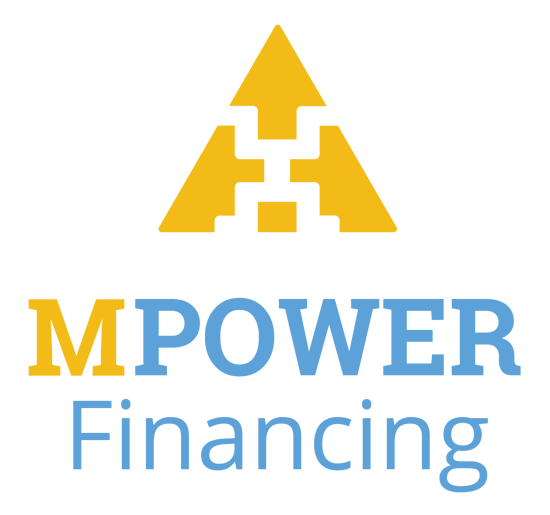Do You Have to Pay Student Loans in Graduate School?
Student loans usually aren’t due during graduate school, but paying them can decrease the amount you owe.
Many, or all, of the products featured on this page are from our advertising partners who compensate us when you take certain actions on our website or click to take an action on their website. However, this does not influence our evaluations. Our opinions are our own. Here is a list of our partners and here's how we make money.
You typically don’t have to pay student loans in graduate school. You can defer payments on federal loans and most private student loans if you're enrolled at least half-time.
But interest will accrue on all graduate school loans and any unsubsidized undergraduate loans during a deferment, increasing the amount you owe. If you can afford to make payments while in school, this is a great way to save money in the long run.
Are student loans deferred if you go to grad school?
All federal student loan payments — including parent PLUS loans taken out on your behalf — can be deferred if you go to graduate school at least half-time. You can also defer federal loans during an eligible full-time graduate fellowship.
Half-time enrollment means taking on half of a full-time course load. Enrolling in one class at a time while you work your way through grad school would likely not qualify. In this case, you'd probably have to continue making payments on your student loans while in school.
Enrollment statuses can look different across universities, so check with your school’s financial aid office to see where you stand.
Many private lenders let you defer graduate loan payments if you’re enrolled at least half-time. But you may need to meet additional criteria to also defer your undergraduate loans.
For example, to defer undergraduate loans with Advantage Education Loans, you must start graduate school within the grace period of your undergrad loans. For Sallie Mae, you can postpone undergraduate payments while in grad school if you selected the deferred repayment option when you took out that loan.
If you worked for a while before attending graduate school, you may have refinanced your student loans. Check to see if your refinance lender offers in-school deferment. If they don't, you can consider refinancing again with a lender that offers in-school deferment before you enroll in grad school.
Advertisement



Student loans from our partners

on SoFi® website
SoFi® 

Fixed APR
4.24-9.99%
Min. credit score
650
on Earnest website
Earnest 
Fixed APR
4.79-9.99%
Min. credit score
665

on Credible’s website
ELFI 

Best for faster repayment options
Fixed APR
4.88-8.44%
Min. credit score
680
How to defer loans while in grad school
If you have federal student loans
Confirm your enrollment status. Your school will report your enrollment status to the government. If you’re eligible for an in-school deferment, you should automatically receive it for your undergraduate and graduate federal loans.
If you do not automatically receive a deferment, contact your school or apply directly by completing the federal in-school deferment request.
Apply for graduate fellowship deferment. If you are enrolling in a graduate fellowship program, submit the graduate fellowship deferment request to your federal loan servicer.
If you have private student loans
Contact your private lenders. If the lender offers in-school deferment, you will need to request it. The process is not automatic like with federal loans. Ask your lender or private loan servicer about its process.
Opt for forbearance. If deferment isn’t available, you could postpone payments with forbearance. All loans accrue interest during forbearance. Private lenders also limit this option, often to 12 months.
Use this benefit only if necessary; you may want to hang onto private loan forbearance in case you lose your job or face a different hardship.
Should you pay student loans during graduate school?
Money may be tight while in graduate school. But if you can afford to make full or interest-only payments during graduate school, it can save you money down the road.
There are no subsidized loans for graduate school. All grad school loans will accrue interest even while in deferment.
For example, deferring payment on a $20,000 Grad PLUS loan, assuming a 7.54% interest rate, would add $1,500 in interest in the first year alone.
The more you borrow and the longer you delay payments, the larger your balance.
Use this calculator to estimate how much interest your loans would accrue by not paying them during graduate school:
Article sources
NerdWallet writers are subject matter authorities who use primary,
trustworthy sources to inform their work, including peer-reviewed
studies, government websites, academic research and interviews with
industry experts. All content is fact-checked for accuracy, timeliness
and relevance. You can learn more about NerdWallet's high
standards for journalism by reading our
editorial guidelines.
Related articles
AD
Refinance Your Student Loans with Earnest: smarter rates, total flexibility, no fees.
Check rate
on Earnest's website

AD

Refinance Your Student Loans with Earnest: smarter rates, total flexibility, no fees.
- Fixed APRs starting at 4.79%, Variable Rates starting at 5.88%;
- Customize your term down to the month (5–20 years);
- Skip one payment every 12 months.
Check rate
on Earnest's website
AD
Refinance Student Loans with SoFi:
low rates, flexible terms, no fees.
Check rate
on SoFi®'s website

AD

Refinance Student Loans with SoFi:
low rates, flexible terms, no fees.
- Rates: 4.74-9.99% (fixed) / 5.99-9.99% (variable) APR;
- Terms between 5–20 years, plus features like interest-only SmartStart for residents;
- Zero application/origination/prepayment fees — ever.

Check rate
on SoFi®'s website










